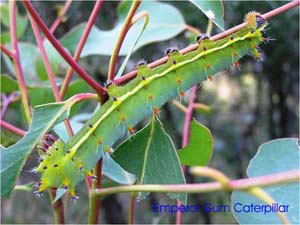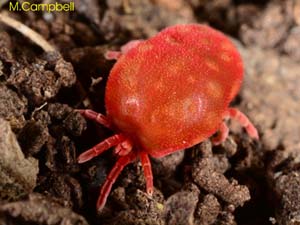About Invertebrates

Emperor Gum caterpillar
Photographer: M. Campbell
There are likely to be millions of new species waiting to be discovered and described.
A lifetime could be spent studying the invertebrates living in the leaf litter of a suburban garden. Most invertebrates are small enough to study with microscopes. There is an endless source of interest and fascination for anyone who takes the time to look for terrestrial invertebrates.
Aims and Activities
The aim of the Invertebrate Study Group (ISG) is to inform the public about the importance of terrestrial invertebrates to the ecosystem. This is done by promoting Community involvement; including with Schools and their students, where ISG members are able to provide valuable support for programs by carrying out locality surveys, validating sightings and preparing data.
Some of our activities:-

Velvet Mite
Photographer: M. Campbell
- We conduct forays into forests, wetlands, grasslands and other habitats that reveal the staggering diversity and complexity of the invertebrate fauna and their interactions.
- Camps and day trips can be aligned with activities of other groups within the FNCV. Zoology, microscopy, botany, mycology and geology are all critical, inter-related disciplines that provide support for all field studies.
- We carry out specialised surveys. Just as there are endangered vertebrates, there are many more endangered invertebrates, such as the Golden Sun Moth. So there are many opportunities to survey such species. One project being considered by the ISG, to be run in partnership with Museum Victoria and the Entomological Society of Victoria, is a survey of the Emperor Gum Moth, which may be vanishing from the urban landscape.. There is anecdotal evidence that predatory European wasps have contributed to its decline in suburbia. The first thing to do is to plot the distribution of the species in the suburbs.
Come along to the meetings and contribute to the planning of activities and special projects and simply enjoy the contact with like-minded, interesting people. There is strong encouragement for those who like to do macro and micro photography of invertebrates.
For dates of meetings and other activities see the Calendar of Events.
